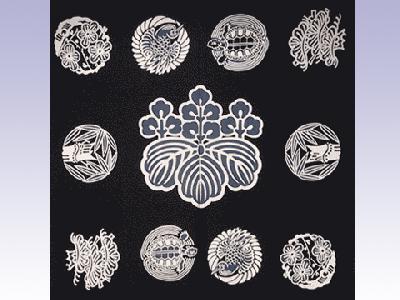|
The furoshiki (wrapping cloths) made in the Izumo, Matsue and Yonago areas of Shimane Prefecture are designated as traditional hometown handicraft.
Before the Meiji period, there were aizome indigo dyers across the nation, however, around 1917 (Meiji 40), chemical dyeing had become popular. By 1950, of the 59 tsutsugaki aizome dyers in Izumo, only 4 remained. Today, only one tsutsugaki aizome dyer remains in Nagata, which is recognized by the prefecture as an intangible cultural asset.
Tsutsugaki aizome with a family crest were used as trousseau items up untilthe Taisho period. Furoshiki wrapping cloths were also included in trousseaus.
Making the tsutsugaki aizome requires repetition in dyeing. During the dyeing process, the patterns on the aizome are protected by paste, which is later washed off in the Takase River.
Before the Meiji period, there were aizome indigo dyers across the nation, however, around 1917 (Meiji 40), chemical dyeing had become popular. By 1950, of the 59 tsutsugaki aizome dyers in Izumo, only 4 remained. Today, only one tsutsugaki aizome dyer remains in Nagata, which is recognized by the prefecture as an intangible cultural asset.
Tsutsugaki aizome with a family crest were used as trousseau items up untilthe Taisho period. Furoshiki wrapping cloths were also included in trousseaus.
Making the tsutsugaki aizome requires repetition in dyeing. During the dyeing process, the patterns on the aizome are protected by paste, which is later washed off in the Takase River.
| [+ADDRESS] | 
|














